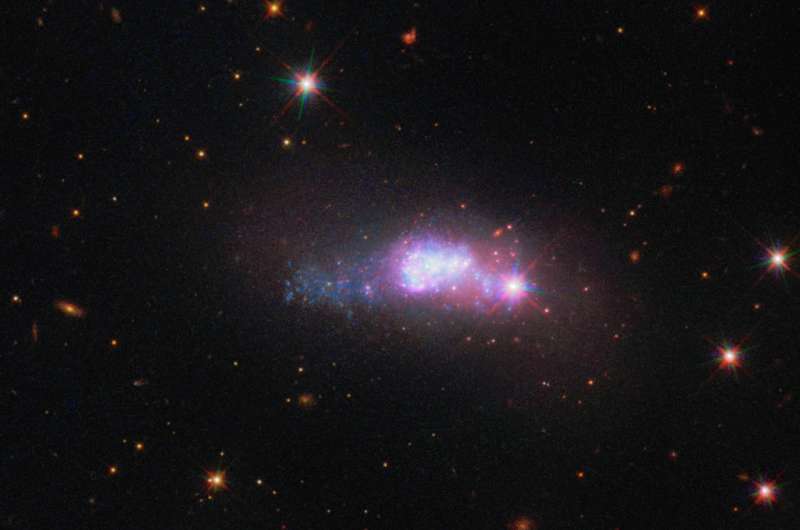Image: Hubble spots a lonely blue dwarf

This captivating image from the NASA/ESA Hubble Space Telescope's Wide Field Camera 3 shows a lonely dwarf galaxy 100 million light-years away from Earth. This image depicts the blue compact dwarf galaxy ESO 338-4, which can be found in the constellation of Corona Australis (the Southern Crown).
Blue compact dwarf galaxies take their name from the intensely blue star-forming regions that are often found within their cores. One such region can be seen embedded in ESO 338-4, which is populated with bright, young stars voraciously consuming hydrogen. These massive stars are doomed to a short existence, despite their vast supplies of hydrogen fuel. The nuclear reactions in the cores of these stars will burn through these supplies in only millions of years—a mere blink of an eye in astronomical terms.
The young, blue stars nestled within a cloud of dust and gas in the center of this image are the result of a recent galaxy merger between a wandering galaxy and ESO 388-4. This galactic interaction disrupted the clouds of gas and dust surrounding ESO 338-4 and led to the rapid formation of a new population of stars.
Provided by NASA





















